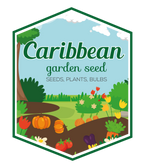
Crop Rotation: Facts and Benefits
WHAT IS CROP ROTATION
The concept of crop rotation is simple: It is the practice of avoiding planting the same crops in consecutive years in the same location. By varying the vegetables grown in different spots annually, you can prevent the accumulation of pests and diseases in the soil. If you move the crop, the pest or disease has no host on which to live. Ideally, rotate a vegetable (or vegetable family) so that it grows in a particular place once out of every 3 to 4 years.
For example, if you planted tomatoes in the same garden bed year after year, they’re more likely to be hit by the same pests or diseases that affected your tomato crop last year. So you’d want to plant them in a different bed in the following year. Then, in that first bed, you’d plant a different sort of crop, such as carrots, broccoli, or chard. Finally, in the third year, you could plant tomatoes in their original spot again
Crop rotation avoids pest problems and maintains soil health while providing necessary nutrients for different plants.
The key to successful crop rotation is “all in the family.” Even though tomatoes, peppers, eggplant, and potatoes look nothing alike, they are kissing cousins in the same botanical family, the nightshades
Here are the major family groupings:
- Alliums: Onions, shallots, leeks, and garlic.
- Legumes: Green beans, green peas, southern peas, peanuts, soybeans. All legumes are soil “fixers” and share the benefit of adding nitrogen back to the soil.
- Brassicas: Broccoli, cauliflower, cabbage, kale, Brussels sprouts, turnip greens, radishes, collards, Chinese cabbage, mustard greens, and collards. Share pest issues and often need to be netted to block cabbage moths. Need nitrogen-rich soil. Plant after the legume (bean) family.
- Nightshades: Tomatoes, eggplant, peppers, and potatoes. These heavy feeders need rich soil. Affected by the same diseases. Never follow tomatoes after potatoes.
- Umbellifers: Carrots, parsnips, fennel, parsley, and dill.
- Cucurbits: Zucchini and summer squash, cukes, pumpkins and winter squash, melons (watermelon, cantaloupe), and gourds. These are all heavy feeders that grow best in rich soil.
There are many more families, but some have only one member that we would grow in a home vegetable garden, like corn, okra, or sweet potatoes. In a small garden, you can group some families together, like putting brassicas with legumes and lettuce to make rotations easier.
There are exceptions to crop rotation; perennial vegetables and herbs shouldn’t be moved yearly since they stay in the ground year-round. For example, mint spreads quickly and is often best contained to one bed, and asparagus needs to settle into a spot for several years before it’s ready to be harvested.

![[Seeds] - Caribbeangardenseed](http://caribbeangardenseed.com/cdn/shop/files/gift-card-gift-card-1_1024x1024_dfa857db-9150-4315-a362-7f0bb3fb9c47_60x28.png?v=1722895789)